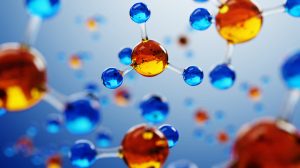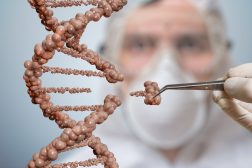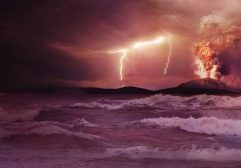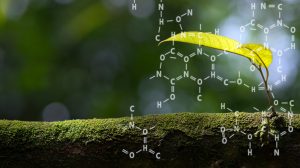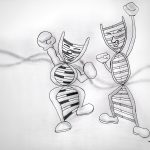Table of Contents
Element Definition
noun
plural: elements
el‧e‧ment, ˈel.ɪ.mənt
(biochemistry) A substance that cannot be decomposed into simpler substances by chemical means, and is made up of atoms all with an identical number of protons
(general) A fundamental component of a composite entity (such as a sieve element that makes up the phloems in angiosperms)
Etymology: Latin elementum (“rudiment”)
Chemical Element
A chemical element refers to the pure substance of one type of atom. An atom is the smallest unit of matter and the fundamental building block of a chemical element. An element would have the same number of protons in their atomic nuclei. This means that all atoms that make up the element would have the same number of protons. For example, carbon is an element comprised of atoms having the same number of protons, i.e. 6. Common examples of elements are iron, copper, silver, gold, hydrogen, carbon, nitrogen, and oxygen.
At present, 94 are natural elements whereas 24 are synthetic. Thus, a total of 118 elements have been identified so far. Elements having an atomic number below or equal to 94 occur in nature. Those having an atomic number beyond 94 are produced artificially.
The processes believed to have primordially produced the natural elements are the nucleosynthesis in the Big Bang, stellar nucleosynthesis, explosive nucleosynthesis in supernovas, and cosmic ray spallation.
Elements of the human body
The most common elements in living things are carbon, hydrogen, oxygen, and nitrogen. In human body, the most abundant elements by mass are as follows: oxygen (65%), carbon (18.5%), hydrogen (9.5%), nitrogen (3.2%), calcium (1.5%), and phosphorus (1%). These major elements make up 99% of the mass of the human body. The 0.85% is comprised of other elements such as potassium (0.4%), sulfur (0.3%), sodium (0.2%), chlorine (0.2%), and magnesium (0.1%).
Substances
A substance pertains to that which has a definite chemical composition and distinct properties and made up of elements in combination with another or the same elements. All compounds are substances but not all substances are compounds since pure elements are also chemical substances.
Elements form a compound. For instance, the combination of sodium and chlorine atoms results in the formation of table salt or sodium chloride. The elements in a compound are held together by chemical bonds. Many of the elements that occur naturally on Earth are chemically combined. Some of the compounds crucial to life are water, sodium chloride, carbon dioxide, etc.
An allotrope of an element pertains to any of the pure substances formed by only one type of element although these substances could differ in structure. For instance, carbon forms allotropes such as coal, graphite, and diamonds. They are made up of only one type of element — carbon. Allotropes are associated with elements, not compounds. They may be of different forms (due to different arrangements of atoms) but they consist of only a single type of element.
[Note: Alloys, in turn, are homogenous mixtures of a metal and one or more other metals or non-metallic elements. Examples of alloys are brass (copper and zinc), bronze (mainly copper and tin), and white gold (gold and usually nickel, manganese, or palladium). They are not pure substances, and therefore, not a compound.]
Minerals
A mineral is a chemical compound, often in crystalline form, and usually abiogenic, i.e. not produced by the activity of living organisms. Nevertheless, a pure mineral would be a type of mineral made up of elements in an uncombined form but with a distinct mineral structure. Examples of pure minerals are gold, silver, carbon, aluminum, cobalt, copper, lead, iron, mercury, silicon, sulfur, tin, zinc, etc.
Mineral, in the context of nutrition, is defined as a chemical element that is needed as an essential nutrient. Minerals are just one of the four groups of essential nutrients; the others are vitamins, essential fatty acids, and essential amino acids. In humans, the essential elements are (1) bulk elements, (2) macrominerals, and (3) trace elements. The bulk elements, which comprise the bulk of the human diet, are carbon, hydrogen, oxygen, and nitrogen. The macrominerals, which are essential as well but in relatively lower amounts than the bulk elements, are calcium, phosphorus, potassium, sodium, chlorine, and magnesium. A trace element is a chemical element required for survival but needed in very small quantities. Examples of trace elements are sulfur, iron, chlorine, cobalt, copper, zinc, manganese, molybdenum, iodine, and selenium.
Isotopes
An isotope refers to any of the different forms of an element (thus, having the same number of protons) but having a different number of neutrons within their nuclei. This means that isotopes would have the same atomic number but a different mass number. Carbon, for instance, has three isotopes: carbon-12, carbon-13, and carbon-14. Isotopes that are radioactive are called radioisotopes. A radioisotope decays into other elements by a process called radioactive decay. The process occurs when the unstable atomic nucleus of the radioisotope loses energy by emitting radiation. All elements have radioisotopes although some of them have been produced artificially.
Radioisotopes have many uses. In biology, they can be used to monitor biological processes such as DNA replication. They are also used to monitor pollutants and measure water runoffs, such as those from rain and snow. They are also useful in measuring the ages of fossils, rocks, and minerals. In nuclear medicine, radioisotopes are used for treatments and diagnosis.
Other biological definitions
The term “element”, in the general context, refers to the fundamental component of a composite entity. An example of this is the term sieve element. In angiosperms, the phloem is the vascular tissue involved in the translocation process. It is comprised of the following major components: sieve element, companion cell, phloem sclerenchyma, and phloem parenchyma. The sieve element is the main conductive cell in the phloem. It is a living cell with a protoplast although the nucleus is absent at maturity.
See Also
Further reading
- How Elements Are Formed (An article with a schematic diagram of the universal element formation, from Science Learning Hub).
© Biology Online. Content provided and moderated by Biology Online Editors
